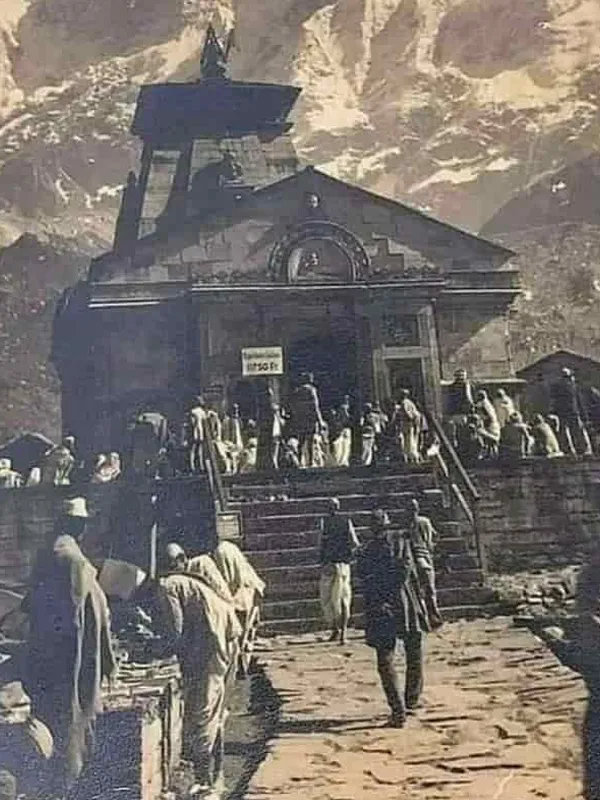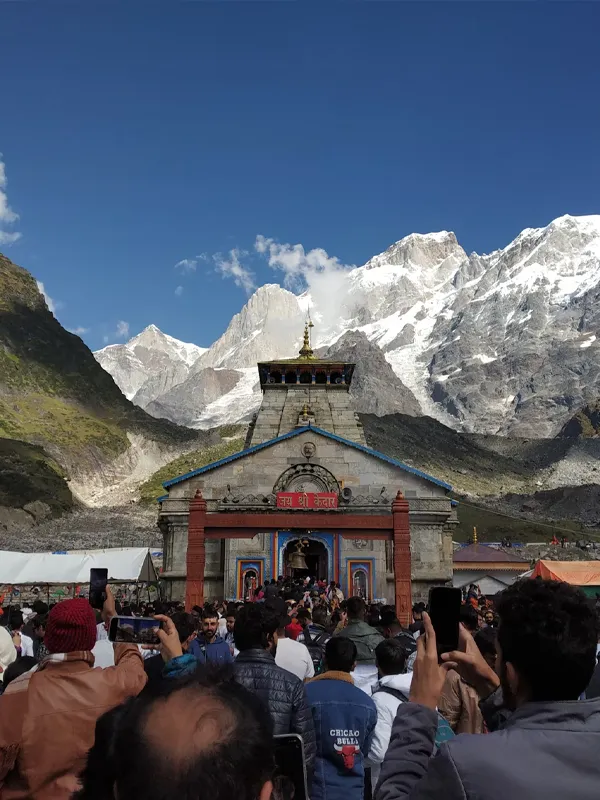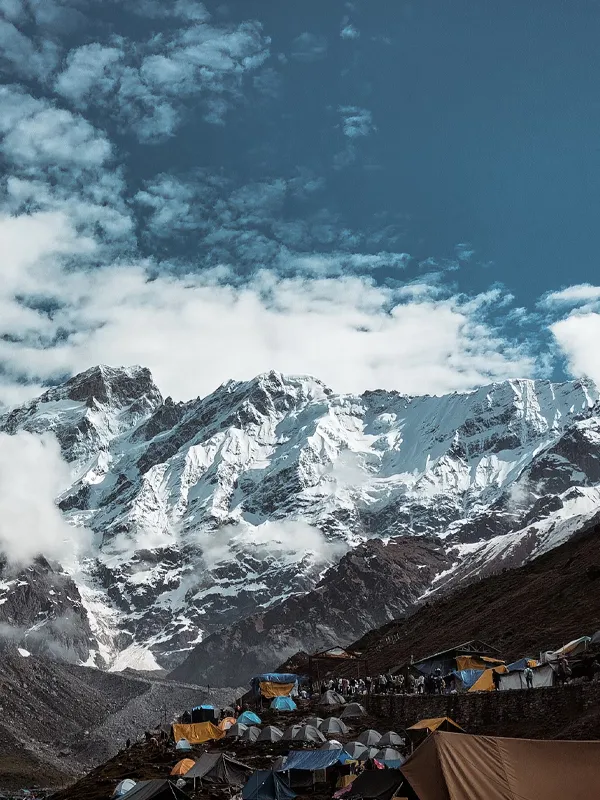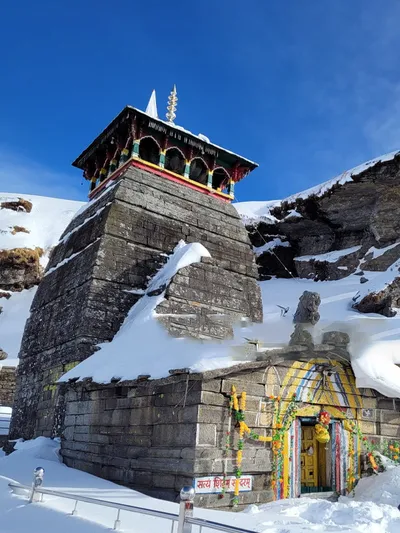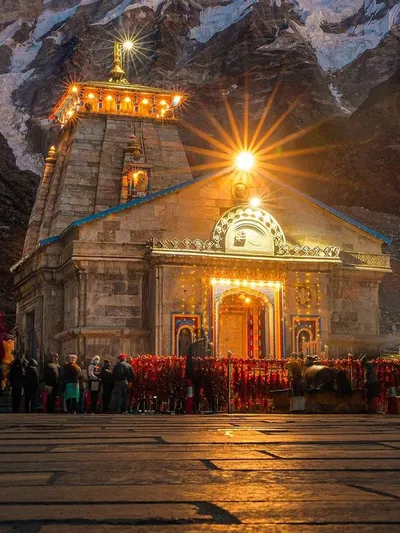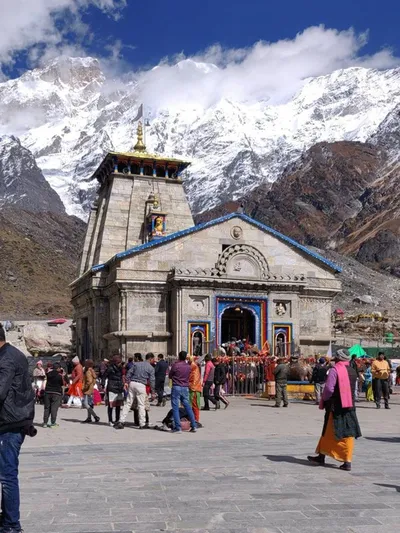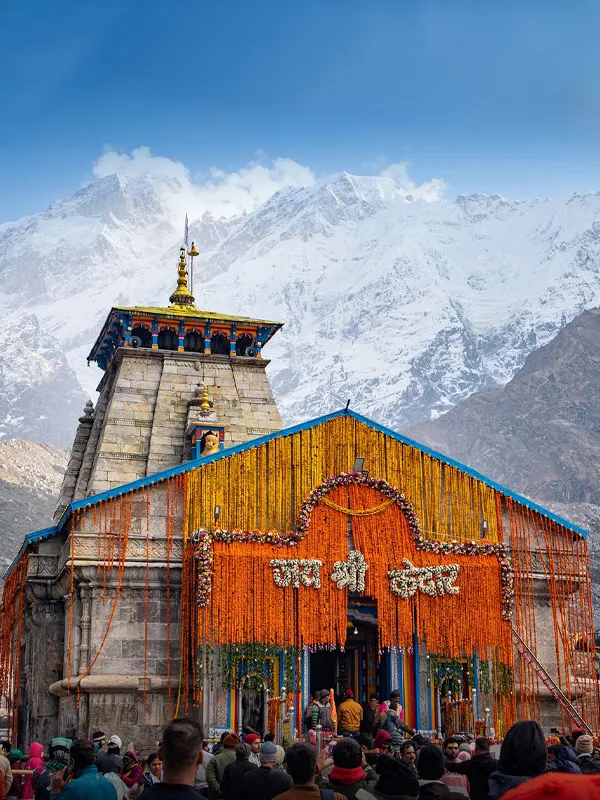
Best Time to Visit Kedarnath

Kedarnath Dham can be an ideal place for Hindu pilgrims; The location is rather distant and high in the Garhwal Himalayas, presenting a breathtaking sight but a difficult journey to reach. People flock from all parts of the country to seek the blessings of Lord Shiva/Baba Kedar. On the whole, the most crucial issue in arranging your trip is the weather and the temperature you can face and when it is better to visit. Your journey can become easy or difficult depending on the given factors. In the following guide, you will get to know everything information related to the weather of Kedarnath and temperature each month of the year and all the necessary data that will help you to make appropriate decisions regarding travel timing. So you can plan to do the Kedarnath Pilgrimage Tour in the appropriate month.
Kedarnath Weather and Temperature Details
| Month | Temperature | Weather Highlight |
|---|---|---|
| January | -4°C to 18°C | Snowfall |
| February | -3°C to -17°C | Snowfall |
| March | 1°C to -12°C | Snowfall |
| April | 8°C to -3°C | Snowfall |
| May | 5°C to 0°C | Clear Weather |
| June | 12°C to 4°C | Clear Weather |
| July | 15°C to 7°C | Cloudy and Rainy |
| August | 13°C to 7°C | Cloudy and Rainy |
| September | 12°C to 3°C | Pleasant but cold |
| October | 5°C to 1°C | Pleasant but cold |
| November | 4°C to -10°C | Snowfall |
| December | -2°C to -15°C | Snowfall |
Kedarnath Dham Weather- Month-wise Details
It is very essential to know about the season highlights when you are planning to visit Kedarnath Dham, check this out –
| Season | Period | Highlights |
|---|---|---|
| Summer of Kedarnath Dham | March to June | Peak pilgrimage season – Temple doors open for Darshan – Sunny weather with a cool breeze – Average temperature: 20-22°C – The best time to visit Kedarnath |
| Monsoon of Kedarnath Dham | July to September | Risky due to landslides and heavy rainfall – Travel during sunny intervals is possible – Offers quieter experience with fewer crowds |
| Winter of Kedarnath Dham | October to February | Entire region covered in snow – Temple closes, deity transferred to Ukhimath – Inaccessible for 6 months – Subzero temperatures prevail |
Best Month to Go for Kedarnath Yatra
The most preferable time to do your Kedarnath Yatra is between May and June. Strictly speaking, Kedarnath is always a cold place; the temperature drops in May – October, but this is the more comfortable time for a visit to the shrine.
During the monsoon season (July to September), it's advisable not to go there because the roads could be blocked due to heavy rains, and landslides, as well as when the roads become slippery due to lots of water on them.
And one more, be aware that temples are closed in winter seasons for heavy snowing. Therefore, just for the sake of anxiety and hesitation, we would recommend getting yourself ready by the end of August. Indeed, if you decide to travel during the monsoon, simply remember to pack right and be more cautious during your journey and while visiting the temple.
Best Time to Visit Kedarnath if you Like Snowfall and Less Crowd
If you don't mind snowfall or want to avoid crowded places, Kedarnath is best visited between Septembers to October. This is when you can expect the temperature to drop, and in some instances, there may even be falling snow. The setting is somewhat peaceful, characterized by the lack of people around, which is suitable for lovers of tranquility and nature. But remember if you are counting winter sojourn, you must get approval from local authorities and safety directions.
Is Kedarnath Yatra Safe to Travel
Wait, isn't it in the summer that it is normally safe? But when we look in the mirror of winter and monsoon, things become complicated. Heavy rain can contribute to landslides making footpaths slippery especially when hills are involved.
Floods can also be triggered when heavy rainfall occurs during these times. On the other hand, winters provide the harshest and most unlivable weather for the pilgrims. The Kedarnath temple is swept by snow from all the quarters during winter, which renders it inaccessible and completely covered in snow. But there are intrepid ones too who come to Kedarnath in winter; they know the risks involved and always take all possible precautions to be safe.
What is the Effect of the Weather and Temperature of Kedarnath on Pilgrims?
- Physical Discomfort: The cold weather of Kedarnath can make pilgrims feel unease, and the situation may worsen if they don't have proper woolen clothes for the chilly weather. It's also possible to encounter unforeseen problems like frostbite in severe cases.
- Travel Troubles: The roads to Kedarnath become very hazardous due to heavy snowfall and icy conditions. Pilgrims face numerous difficulties while seeking blessings at the temple during such bad weather. Slippery roads can cause problems, leading to roadblocks and even complete stoppage of the journey.
- Health Worries: The high altitude can lead to health problems for spiritual travelers, especially those unfamiliar with such conditions. Risks include altitude sickness, dehydration, and oxygen deficiency due to excessive strain on breathing, which are particularly relevant in this weather.
- Limited Access: When weather conditions deteriorate, the path to Kedarnath temple becomes difficult as snow can cover everything, making the trail indistinct and potentially preventing pilgrims from reaching the temple. This may reduce the available pilgrimage time or force pilgrims to take alternate routes.
- Emotional Impact: The weather and temperature at pilgrimage sites can significantly affect pilgrims emotionally. Severe weather conditions during the hike may turn excitement into worry and fear, while warm evenings and clear skies can calm the soul and enhance the spiritual journey.
However, a complex situation, created by the unpredictable weather, cannot but make pilgrims demonstrate unbelievable courage and steadfastness, thus strengthening their religious spirit and bonding with the Divine power more and more.
Why Pilgrims Travel to Kedarnath Dham Despite Challenging Weather Conditions
There is no denying that Kedarnath is not about fighting just nature rather it is a huge spiritual and self-discovery journey. The physical struggle, which includes the cold temperatures, is something pilgrims don't shy away from, but rather, they embrace it, deepening their spiritual connection as they continue along the demanding terrain.
Apart from this, the harsh conditions forge a feeling of community among these pilgrims as they mutually support each other to get through the journey, building long-lasting friendships against the backdrop of Kedarnath's magnanimous natural surroundings.
People come to these journeys of self-reflection during harsh and unpredictable weather. They take time to look inside themselves, thinking about their beliefs and how these influence their lives. Overcoming the challenges of weather gives the pilgrims an indescribable feeling of triumph and appreciation.
Pilgrims often relate these inspiring stories of courage and steadfastness to their family and friends back home. The journey of pilgrims to Kedarnath gives them a more meaningful understanding and love towards nature, a deep faith in the Almighty, and an increased conscience about the health of the environment for future generations.
Tips to Cope with the Cold weather of Kedarnath Dham
- Altitude Awareness: Kedarnath's high altitude means thinner air with lower oxygen levels. If you're not acclimatized, proceed slowly - pace yourself, take regular breaks, and listen to your body to avoid altitude sickness during your hike.
- Sun Protection: Despite cold temperatures, sunlight at high altitudes is extremely intense. Protect yourself with sunscreen, UV-blocking sunglasses, and head coverings, as sunburn occurs quickly and snow reflection intensifies UV exposure.
- Stay Hydrated Safely: Never drink untreated water from natural sources in Kedarnath, no matter how clean it appears. Always use bottled water or purify water with tablets to avoid waterborne illnesses.
- Windproof Clothing: Pack wind-resistant outer layers regardless of the season, as icy winds can occur suddenly, especially at higher elevations. A good windproof jacket significantly improves comfort.
- Monitor Weather Changes: Mountain weather changes rapidly. Stay alert to cloud formations and weather warnings. At the first sign of deteriorating conditions, seek lower ground or shelter immediately.
Level of Oxygen in Kedarnath Dham
The problem is about the oxygen concentrations at Kedarnath. After all, being in the highest part of the Himalayan Mountains means that it is a bit thin in the air. So when you are making your travel plan, be careful of your health because you don't want to come back with illness. Due to low oxygen, you might discover shortness of breath after you take a simple walk. Also, you must be aware of the danger of altitude sickness – it is a very real concern. You can feel dizzy, weak, or breathe faster than normal. This is an important reminder as you make preparations for your journey.
Season-Specific Things to Carry in Kedarnath Dham
Summer
So, on those sheer sunny days, pleasing and breezy clothing will be your best choice. Put light clothes in your suitcase to feel cool, and remember that you should wear sunscreen and put your sunglasses on your face to maintain self-protection from the scorching hot sun. Oh, and stay hydrated! Don't forget a handy water bottle to go with you.
Monsoon
In moments, if monsoon rains come down, there you'll need to be ready. Plan by having a waterproof jacket or a handy poncho in case you get wet, the same happens when it comes to pants or shirts opt for the quick dry type to stay dry and warm. Don't forget that you also need to keep your gear secure and dry. In this case, a waterproof shoulder bag will do. They can get on your nerves, so don't forget to carry some insect repellent or such tools to stop them.
Winter
When the snow starts to fall, then it is time to put the jackets on! Complement your cold-weather attire with layers such as thermal underwear, a sweater, and a nice down jacket. Maintain the heat in those appendages with the insulated gloves, snug hat, and a toasty scarf. And while you are at it, make sure you have the right footwear – waterproof and insulated, because you will certainly want to handle this snow. And remember to pack some hand warmers and an extra pair of socks in case your feet get cold.
Hence, here you are – a way through the weather of Kedarnath! In addition, planning for all weather conditions, whether it is summer, monsoon, or winter is of utter importance for having the best camping trips. Therefore, stuff your backpacks with all the necessities, monitor the weather forecast, and be ready for an epic journey. In rain or shine, whether snow-clad or sun-kissed, with a good set of gears and a positive vibe, Kedarnath is all yours to explore to the fullest. Thus, take up the challenge, and you will certainly be rewarded with an unforgettable experience!
FAQ – Frequently Asked Questions
Q-1: What is a good time to visit Kedarnath Dham?
The month of May to June is best for visiting Kedarnath Dham as the weather is comfortable for sightseeing and walks. It is the best time for temple darshan.
Q-2: What is the off-season to visit Kedarnath Temple?
September to October is the off-season to visit Kedarnath Temple. During this time, Kedarnath is less crowded.
Q-3: Can we visit Kedarnath in December?
The main highlight of Kedarnath Dham is the iconic Kedarnath Temple but it is closed during the winter months (November to April). You can still visit Kedarnath in December but you will not be able to see Baba Kedar in the temple as it is entirely covered in snow during December. The temple deity is shifted to Ukhimath.
Kedarnath Travel Guide
Kedarnath Travel Packages
Hotels in Kedarnath
Chardhamtour.in is not the official website of the Uttarakhand Government. We are a registered travel agency with Uttarakhand Tourism and provide travel-related services. For Chardham Yatra registration, visit registrationandtouristcare.uk.gov.in for pooja booking, visit badrinath-kedarnath.gov.in for Kedarnath helicopter tickets, visit heliyatra.irctc.co.in for Uttarakhand tourism info, visit uttarakhandtourism.gov.in for Karnataka government subsidy, visit sevasindhuservices.karnataka.gov.in.
Chardhamtour.in aims to provide helpful information, latest updates about Chardham Yatra, and services related to tourism in Uttarakhand.
